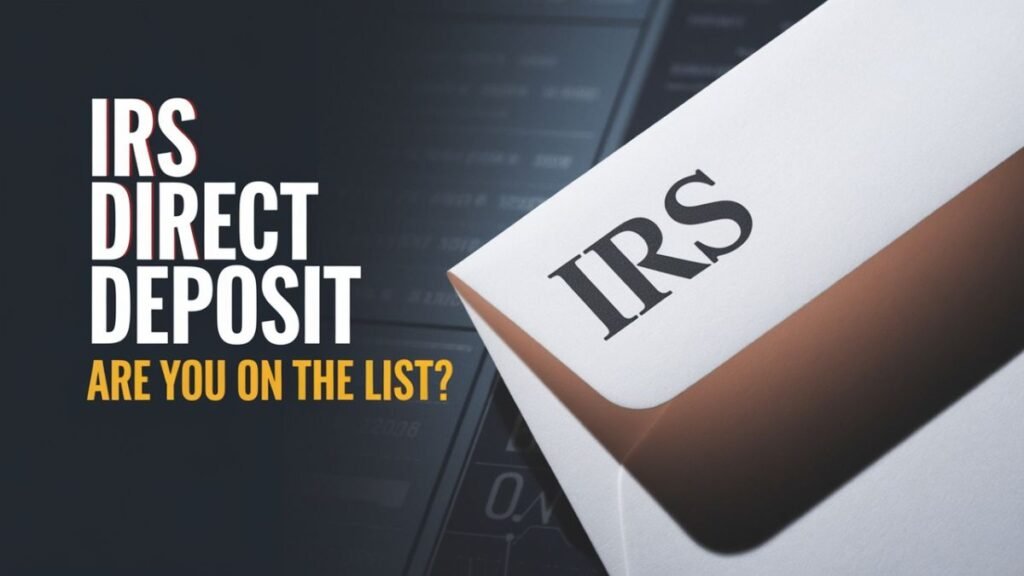The direct deposits of $1,200+ in April 2025 from the IRS: Know who is eligible, how to get the money, and by when. If you have missed any of the economic relief measures (Stimulus Payments) during the period of Covid-19, and you did not receive the full third Economic Impact Payment (EIP), then this could be it for you. In April 2025, the IRS is again directly depositing into bank accounts of eligible citizens $1,200 or more being given under Recovery Rebate Credit. Here in this article, we will dive deep into what the Recovery Rebate Credit is, who is entitled to it, what documents and processes do you have to follow to receive it, and other helpful tips, so you don’t miss this opportunity.
| Aspect | Details |
|---|---|
| Payment Amount | Up to $1,400 per individual |
| Who is Eligible | U.S. citizens or resident aliens not claimed as dependents, with valid Social Security numbers, who didn’t receive full third EIP (IRS Source) |
| Deadline to Claim | April 15, 2025 |
| How to Claim | File a 2021 federal tax return and complete the Recovery Rebate Credit section |
| Official IRS Resources | IRS Recovery Rebate Credit |
What is the Recovery Rebate Credit?
It is the Recovery Rebate Credit that would be intrusively refundable benefit tax credits by non-filers in order to receive their rebates for not acquiring or receiving the third-stimulus payment in 2021. Credit payments to U.S. citizens and qualifying resident aliens may equal up to $1,400 per person.
The credit came with the 2021 American Rescue Plan and now it is the IRS’s last chance to let eligible citizens claim it. The cutoff date is April 15, 2025. If you haven’t already done so, do it now!
Direct deposits of $1,200+ will go to these persons:
- You may be eligible for the Recovery Rebate Credit if:
- You didn’t get the third stimulus payment.
- You didn’t get the full amount.
- You had a change in your income or family situation in 2021.
- A new dependent (such as a newborn) joined your household in 2021.
- The credit is based on 2021 tax returns and not on 2020 or 2022 tax data. That means that whether you qualified previously or not, you may qualify under 2021 tax filing.
Requirements for Eligibility
You must meet these conditions: You must be a U.S. citizen or resident alien in 2021.
You must not have been claimed as a dependent on someone else’s tax return.
You must have a valid Social Security Number (SSN).
Your income must be within the limits: You must file a 2021 federal tax return, whether or not you have previously filed taxes.
| Filing Status | Full Credit AGI Limit | Phase-Out Starts | Fully Phased Out |
|---|---|---|---|
| Single | Up to $75,000 | $75,001 | $80,000 |
| Married Filing Jointly | Up to $150,000 | $150,001 | $160,000 |
| Head of Household | Up to $112,500 | $112,501 | $120,000 |
How to claim the Recovery Rebate Credit?

Step-by-step process:
- Gather documents: 2021 income information , Social Security Number (SSN), Any letters sent by the IRS, such as Letter 6475
- Fill your 2021 tax return: If your income is less than $73,000, you can use the IRS Free File tool.
- Fill out the Recovery Rebate Credit section: Follow the instructions in your tax software or Form 1040.
- File your tax return by April 15, 2025: This is your last chance, don’t miss it.
- Choose direct deposit: Get the money transferred directly to your account by providing your bank details.
Real life example
Sarah and Mark gave birth to a child in 2021. They did not receive the third stimulus payment for the child. When last year they were prepared to lodge their tax return in 2021, one more development took place: My fair clients got even better off by an additional $1,400.
David was a dependent, but by 2021 he was independent. He filed his tax return and received the full $1,400.
What if you’re not a tax filer?
Even if you had zero income, you must file a 2021 tax return to get the Recovery Rebate Credit. The IRS will not send it automatically.
What not to do? (Common Mistakes)
- Missing the deadline: The deadline is April 15, 2025.
- Entering the wrong Social Security number: Check every number.
- Not updating family information: New children or changing filing status is important.
- Entering the wrong tax year: This credit is only for 2021.
Conclusion
The IRS’s $1,200+ direct deposits being sent out this April through the Recovery Rebate Credit present a valuable opportunity for eligible Americans to claim missed or partial stimulus payments from 2021. Whether you didn’t receive the third Economic Impact Payment or experienced changes in income or dependents that now make you eligible, filing a 2021 tax return by the April 15, 2025 deadline is essential. This credit, worth up to $1,400 per person, is not taxable and will not affect other government benefits. In a time of rising costs, it’s a crucial financial boost that you shouldn’t ignore. Don’t delay—file your 2021 return and claim what’s rightfully yours.
FAQs
Q.1 How much can I get?
A. $1,400 per eligible person—including dependents.
Q.2 If I already received a Stimulus check, can I still claim it?
A. Yes, if you didn’t receive the full amount.
Q.3 What if I didn’t file taxes in 2021 or 2022?
A. You can still file a 2021 tax return by April 15, 2025.
Q.4 How will the IRS send the money?
A. Via direct deposit or check to the bank details you provide.
Q.5 Do I need any special forms?
A. Only Form 1040 (2021) is required. Most tax software supports it


